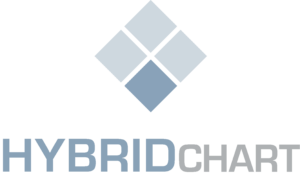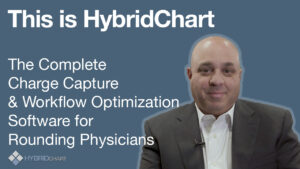Revenue Cycle Management has become increasingly intricate. Two critical components of this process—charge capture and coding—often cause confusion among healthcare professionals. While closely related, these distinct processes serve different functions in the revenue cycle. Understanding their differences is essential for optimizing practice efficiency and maximizing reimbursement.
What is Charge Capture
Charge capture is the process of documenting and recording billable patient services and procedures at the point of care. It represents the initial step in the revenue cycle, where clinical activities are translated into billable events.
When a physician performs a service—whether it’s a routine check-up, a surgical procedure, orders labs or administers medication—that service must be “captured” to ensure the practice is compensated appropriately. This critical first step establishes what was done, when it was done, and by whom.
Effective charge capture typically involves:
- Identifying all billable services performed
- Recording accurate patient information
- Documenting the date and location of service
- Noting the treating physician
- Capturing any supplies or medications used
The significance of accurate and timely charge capture cannot be overstated. Missing charges or delayed documentation directly impacts a practice’s bottom line and can create compliance issues. Studies have shown that healthcare organizations lose approximately 5% – 15% of potential revenue due to missed charges — a substantial amount when considering the razor-thin margins many practices operate within.
What is Medical Coding
Medical coding follows charge capture in the revenue cycle. It involves translating clinical documentation into standardized, universally recognized alphanumeric codes. These codes communicate what services were provided, the patient’s diagnosis, and other essential information to payers.
The primary coding systems include:
- Current Procedural Terminology (CPT) codes for procedures and services
- International Classification of Diseases (ICD-10-CM) for diagnoses
- Healthcare Common Procedure Coding System (HCPCS) for supplies, medications, and services not covered by CPT
Coders must analyze clinical documentation, extract relevant information, and assign accurate codes based on specific guidelines. This process requires extensive knowledge of medical terminology, anatomy, physiology, and coding conventions.
Key Differences Between Charge Capture and Coding
While both processes contribute to proper reimbursement, several distinctions separate charge capture from coding:
- Timing in the Revenue Cycle: Charge capture occurs at or near the point of care, while coding typically happens afterward, often in a separate department.
- Personnel Responsibility: Charge capture is primarily performed by clinical staff (physicians, nurses, or clinical assistants) who were present during the patient encounter. Coding is performed by certified professional coders who may have no direct patient interaction.
- Focus and Detail: Charge capture focuses on identifying billable services and ensuring nothing is missed. Coding focuses on precisely representing those services according to standardized classification systems.
- Required Knowledge: Charge capture requires understanding which services are billable. Coding requires in-depth knowledge of coding guidelines, documentation requirements, and regulatory standards.
- Compliance Implications: While both processes have compliance implications, coding errors typically face greater scrutiny during audits and can more directly lead to allegations of fraud or abuse.
Integration in the Revenue Cycle Management
Together, charge capture and coding form the foundation of the revenue cycle management (RCM) process. The complete RCM workflow typically follows this sequence:
- Patient Registration: Demographic and insurance information collection
- Charge Capture: Documentation of services provided
- Coding: Translation of documentation into standardized codes
- Claim Submission: Transmission of coded claims to payers
- Payment Posting: Recording of payments received
- Denial Management: Addressing rejected claims
- Patient Collections: Securing payment for patient responsibility portions
Inefficiencies in either charge capture or coding cascade through the entire revenue cycle, potentially causing:
- Delayed reimbursement
- Increased denial rates
- Compliance violations
- Revenue leakage
- Inaccurate data for quality reporting
The Impact of Technology on Charge Capture and Coding
Modern healthcare technology has revolutionized both charge capture and coding processes. Electronic health records (EHR) systems, while helpful, often fall short in providing comprehensive charge capture functionality.
Specialized charge capture solutions like HybridChart offer significant advantages, including:
- Mobile accessibility for real-time documentation
- Automated charge reconciliation
- Integration with EHR and practice management systems
- Analytics for productivity and revenue tracking
- Compliance safeguards to prevent common errors
These technologies bridge the gap between clinical documentation and coding, creating a more seamless revenue cycle workflow.
HybridChart is Leading the Charge Capture Revolution
As the healthcare landscape continues to evolve, HybridChart has established itself as the leader in charge capture technology. Unlike generic EHR modules, HybridChart was designed specifically to address the unique challenges physicians face in documenting patient encounters accurately and efficiently.
HybridChart’s comprehensive charge capture solution provides:
- Intuitive mobile interface for capturing charges at the point of care
- Automated charge reconciliation to identify missing charges
- Sophisticated rules engine to flag potential compliance issues
- Seamless integration with leading EHR and billing systems
- Real-time analytics to track productivity and revenue performance
By streamlining the charge capture process, HybridChart helps practices reduce the burden on physicians while maximizing revenue and maintaining compliance.
Optimizing Your Revenue Cycle
Understanding the distinct roles of charge capture and coding is vital for healthcare organizations seeking to optimize their revenue cycle. While coding excellence remains crucial, implementing robust charge capture processes provides the foundation for coding success.
For practices looking to enhance their charge capture capabilities, HybridChart offers a proven solution that addresses the challenges of modern healthcare. By implementing purpose-built technology, healthcare organizations can reduce administrative burden, improve financial performance, and allow clinicians to focus on what matters most—patient care.
To discover how HybridChart can transform your charge capture process and enhance your entire revenue cycle, schedule a demo today. Our team will discuss your current workflow and show you how the HybridChart charge capture solution can fit seamlessly into your practice, saving you time and money.





